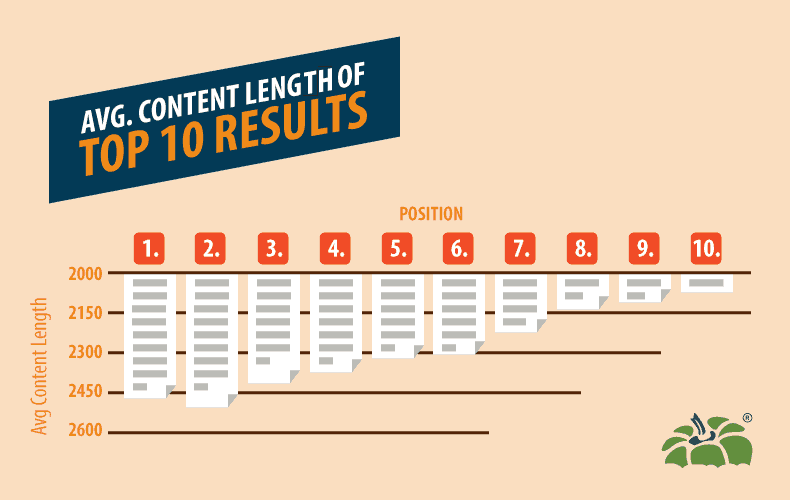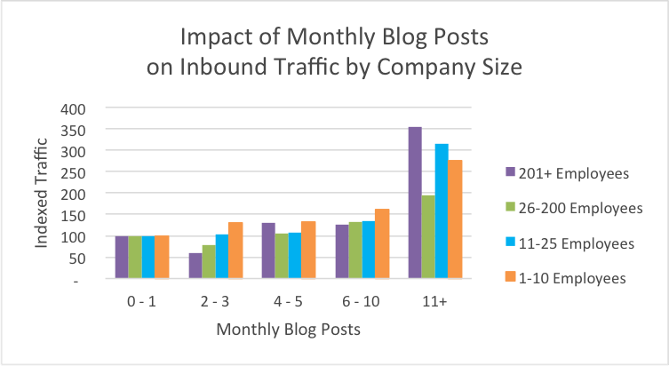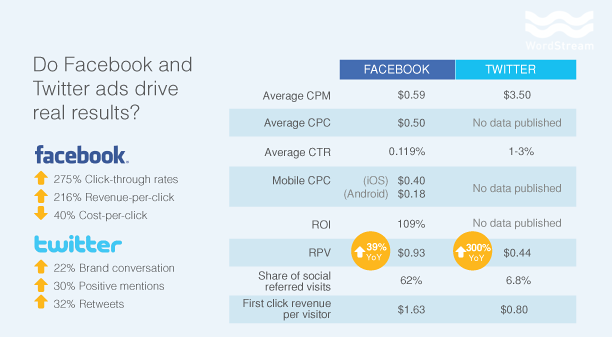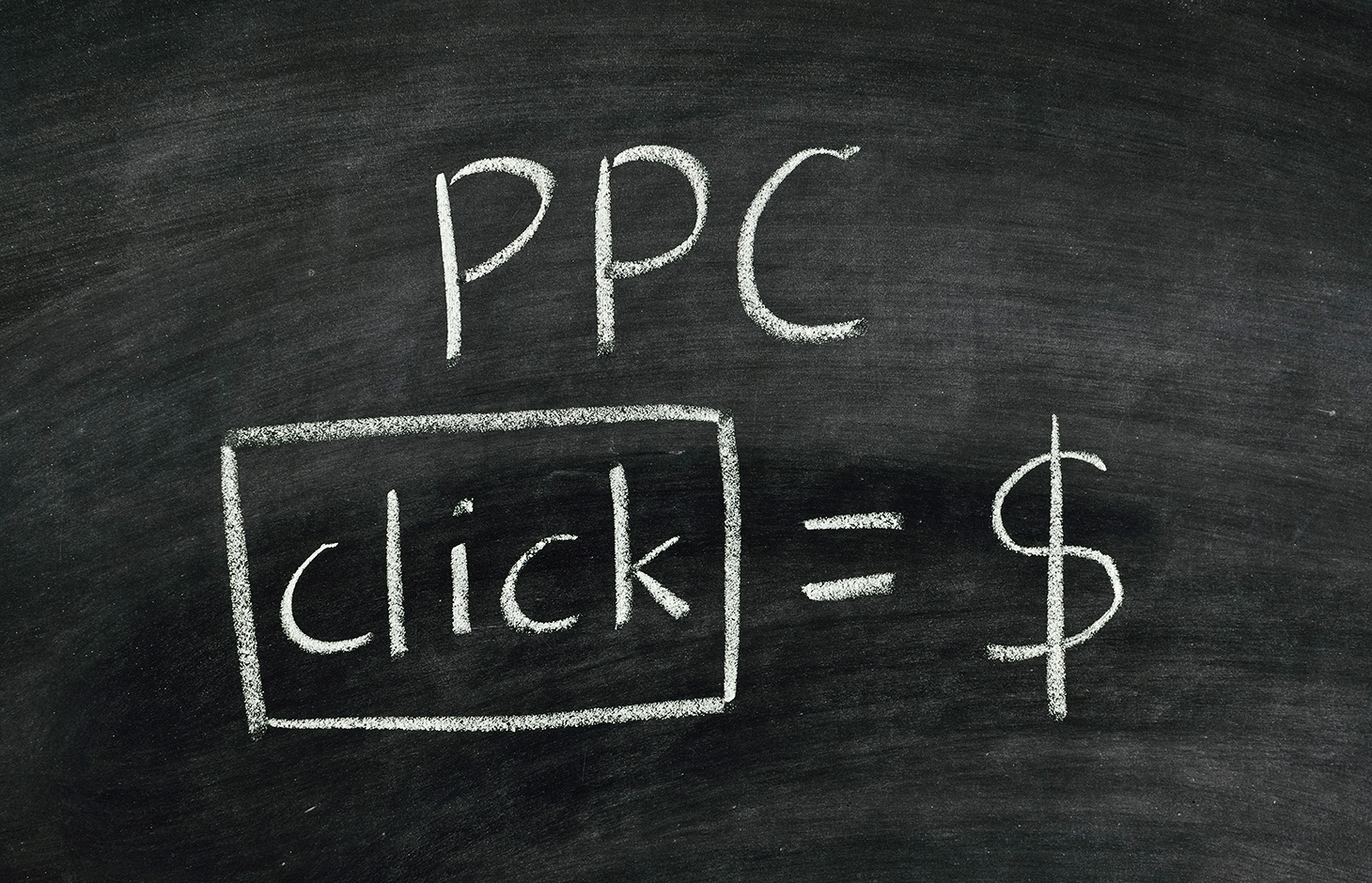Content Creation Management
What is Content Marketing?
Content Marketing is the process by which digital content is produced for your website, blog or even other people’s website and is then distributed using digital channels to drive visitors that are looking for the product or service that your brand provides to your website so you can build a sales funnel based upon their interaction with the content.
Content marketing is therefore not new. It has been around for a very long time and has actually slipped into everyday life. One of the early forms was the Michelin Guide to restaurants. We forget that this guide was initiated by a tyre company for motorists to go and visit establishments with good food.
Today’s digital content marketing is slightly different. Nonetheless it is still inherently based upon content that you own or can redistribute to reinforce your brand. Some of the early examples of this were the PDF’s of white papers or case studies that have abounded the software and business to business sector for years.
The days of product push or service push content has changed and we are now looking for value added in the content. The user wants the content to add something to their experience – they do not want to know your latest capability or feature but what your brand or product can do for them. No longer are modified press releases acceptable. This is all about telling the story around your brand. It is about showing that you are the thought leader for your product or service and if you are not the thought leader then you can at least demonstrate that you understand what the customer wants!
What is the Content Marketing Process?

Different organisations require different process based upon their structure and industry. We have a general process that we apply – tweaking it for different situations. The key to success is to focus on what it is that you need and make sure it is available when you need it.
This is a 5 step process:
- Plan and Program – Taking the output from your Digital Marketing Strategy we design what is needed to do to deliver the goals from content marketing
- Idea Generation and Production – Generate ideas for the content to match the deliverables.
- Implement – Take the material that has been produced and publish it.
- Distribute – Distribute the material in multiple formats across multiple channels.
- Analysis – Ensure we understand the success of the campaign and the lessons learnt.
1. Plan & Program
Content planning is the fundamental start point of any successful content marketing campaign and you should always develop a Campaign Plan. We need t0 understand what the end goals are, the time frame and the budget to delver the content that we need. The fundamentals of the plan need to include:
- specific goals
- timescale and the resources including budget
- team members, responsibilities and availability
- the target audience
- the types of content required
- content already available
- the channels we will use to distribute
- detailed planning calendar -task by task
- what to measure
Using an outside agency can increase the success of this step of the process because they understand the reality and complexity of what is being asked for. Rushing jobs because of a lack of resources and short time scales only leads to and downgrade in quality of the content.
The goals are likely to be feeding into the overall goals of the digital marketing strategy:
- Volume Unique visits, Visits by channel, Conversion rates, Subscribers, Cart Abandonment Rate, Branded Keyword Visits, etc.
- Quality Pageviews, Return visits, Visitor Loyalty, Time on Page, Product or Service Page Conversion Rate, Landing Page Bounce Rate, Follower Growth Rate
- Value Revenue per hour/day/week/month, Revenue per channel, Cost of conversion
These then need to be cascaded down to more specific areas for a campaign:
Traffic.
Traffic is important to be able to determine how much of your material is getting in front of the target audience. In social media terms we can see what clicks, re-shares (retweets), mentions, comments are and this can be used for audience interaction rates. In terms of website traffic we can see where the visitors are coming from through referrals or using tracking codes in the pages.
Conversions.
A conversion is a successful visitor interaction where the visitor makes a call to action – whether that is filling in a form, subscribing to a mailing list, downloading a document or even calling. Again we can measure these and if the content is new we can immediately see the success or the campaign. If we are re-using the content then we can look for incremental growth.
Popularity.
Clearly on social media we can look at the number of followers and interactions by followers as a measure of popularity. We should not be overwhelmed by vanity statistics, a following of 10,ooo with an interaction rate of 5% is better than a following of 100,000 with an interaction rate of 0,05%. A better targeted campaign should lead to higher interaction.
Brand awareness and reputation.
Brand awareness and reputation is a very difficult metric to clearly measure and depends on many factors. Some social measurement software takes a stab at quantifying this and as long as the same measurement is taken we can show the effect of a specific campaign all other things being equal.
2. Idea generation and Production
Sometimes know as ideation, generating ideas for content marketing can be a major stumbling block. Experience about what has worked in the past is crucial.
In general good content has the following properties:
- it show or recounts your brand’s story to a targeted audience that is likely to be receptive
- it can hit a note with your social media followers, the readers of your blog, the people that have subscribed to your newsletter, influencers, journalists and other bloggers
- informs to be able to positively affect sales at an early part of the cycle
- it is not a simple sales pitch
- builds your brand’s reputation and online reach setting you up as a thought leader
- grows your audience
- helpful, educational, insightful, creative, sometimes funny and topical
The overall production process generally includes:
- brainstorming or a version of brainstorming to get a large number of ideas (good or bad)
- seeing what the competition are doing
- defining content format and structure
- defining which ideas for which personas
- defining where in the buying cycle the content fits
- defining content for different channels
- selecting of long list
- a risk assessment and sanity check
- shortlisting the ideas
- prioritising the ideas from the shortlist
- planning development and production
3. Implement the development plan
This is the nuts and bolts of the campaign – getting the content to distribute.
But before launching a major theme it is best to test. The test can be made with team members, sales people (they are closest to your customers), influencers and possibly even investors in a startup situation.
The critical success factors are:
- quality
- quality
- quality
- consistency
- ensuring the editorial calendar is realistic and kept to
- measurement techniques built in place
To make sure these element are all stuck to, it is necessary to have a process that checks at each stage. Generally there going to be the following elements:
- writing the content or if we are talking about an infographic or simple banner the strap-line
- producing the graphic content
- producing video if required – with copy input
- proofreading and blue-pencilling text and helping in rewriting if necessary
- re-checking final content
This process can be done on a piece by piece within a campaign or extended to an ongoing marketing effort. Just remember that the writing and the graphics are what take the time.
According to Hubspot…
“According to our research, in every region of the world, most marketers spend 1-2 hours writing a 500-word blog post… In North America: The largest number of marketers (38%) spend 1-2 hours writing a typical blog post. In the same region, 29% of marketers spend 2-3 hours writing a blog post, 29% spend 4+ hours per post, and only 8% spend less than an hour per post.”
…but that does not include the research time based on keywords and the topic, proofreading and subsequent checking and editing. Furthermore a 500 word article is somewhat short. You should probably be looking at a minimum of 2,000 – 2,500 words for extended content pieces – so that adds up to half a day to a day pero article. If you are going to be blogging once a day during a campaign to increase or owned content, you have just taken up a dedicated full time person. Some of the content can be shorter perhaps 1,000 words but it is still a significant time investment.
We think of each of these pieces of content as digital assets. An asset is defined as “an item of property owned by a person or company, regarded as having value and available to meet debts, commitments, or legacies.” This implies re-use or multiple use. So the content can be re-used for different channels or purposes. The text from a blog entry can be turned into a guide or white paper. Common images can be used in different documents.
4. Distribute
Once content is published, it can be distributed on the chosen channels. The choice of the channels should come from the higher Digital Marketing Strategy and the Campaign Plan.
The channels can be divided into three basic views
- Owned
- Earned
- Paid
Owned media includes the channels that belong to you, where you control the content such as:
- blog
- website
- newsletter
- social media profiles
- mobile marketing (WhatsApp / SMS)
- conference stands
- brochures
Earned media involves other people adding to or simply sharing your content through their own channels:
- social media shares
- guest posts
- press releases and other media coverage
- reviews, comments
Paid media is the content that you pay for to be distributed:
- pay-per-click ads
- display ads
- social media ads
- social media promotion
- affiliate marketing
- re-marketing
The channels you choose will depend both upon your industry sector as well as the specific product or service you want to promote in this campaign. For more details see below.
5. Analysis
Understanding what the goals of a campaign are is fundamental. Measuring the success of the campaign is equally important. The key is aligning what you measure with the campaign goals.
The principal metrics we can look at are:
- conversion rate: the number of clicks that go through to the destination (not always the webpage)
- conversation rate: the number of likes/mentions/ comments that a post get; a measure of the interactions
- total natural reach: the number of potential eyes from our own network that can see a piece of content
- the amplification rate: the number of shares per post, this is the genesis of viral marketing, get a post that amplifies many more times than our own natural total reach and we have a viral piece of content
What are the types of Digital Content that you can use?
Over the last few years the formats have changed. Simple text in a blog or a PDF are still good forms of content but there are many different valid alternatives:
- Web Pages, Articles and Blogs Entries – this is the classic but most important content available. People read and can be persuaded or entertained by text that is on your website or in other channels. More importantly Search Engines can read too – they will recognise and rank you for you content. The text can be blogged, microblogged distributed via social media – the list is endless.
- Guest Blogs – Guest blogging is about placing your content on someone else’s website or blog to increase the traffic for yourself by making reference to your own website. Similarly if you can find key influencers in your industry or associated with your industry and get them to blog on your site then you may pick kudos from their influence.
- Videos – This is the typical YouTube or Video which fall into the informative, learning or entertaining genres.
- User Generated Content – This can be very high value. Based upon any interaction the users of your product or service allow you to publish. This can range from a simple testimonial to a story of how your products or service helped change or improve their situation.
- How to Guides – The obvious is to write a How to Guide about your product but equally it can be very useful to write the guide surrounding processes that are in orbit around your product and that might compliment your product.
- Case Studies – These are like practical How to Guides in as much as their are practical applications of your brand. The bigger the name that the case study demonstrates the better.
- Streaming – Streaming a keynote presentation, a demonstration or an event can add value. Don’t bet the last dollar on everyone watching right to the end unless their kid appears onstage! Obviously this can be video or just sound.
- Infographics – Probably one of the most abused forms of content used over the last two to three years. The first were interesting and coincided with the rise of Pinterest as a distribution channel. They have advantages in terms of tracking and are not so easily copied as text.
- Newsletters and E-mail – Get a subscriber list (double checked) to reinforce a new article of content in your website. This is more than a distribution channel as the content can be repurposed for the e-mail format.
- Interviews – You need to make sure that the interviewee is likeable and can tell a good story. If you have a influencer talking about your brand then this can be of very high value. Getting the CEO to talk may not necessarily be a good idea!
- Customer Support Stories – Customer support or customer service can be a great way to show how your brand can add value and reassure potential customer that you brand is best for them. Publish the successful story, warts and all. If you have a chat app reproduce it….
- Stats – having real stats to back up and element of your brand story is a great idea. It can build upon the fear that the visitor may not have the advantage of your brand in their pocket or reinforce the idea that with it they may have more success.
- ‘What to do’ and ‘what not to do’ posts – This reinforces your profile as a thought leader and knowledge guru for your industry.
- Recognise Greatness – If someone in your industry does something spectacular then make sure you recognise it. You never know they may do the same for you.
- Repurpose Presentations – If you have corporate presentations (yup those old Powerpoint) then make sure you get then up on to LinkedIn’s Slideshare.
- Company News – Be careful, this could be boring and come under the category of navel gazing. What would be news would be if you raise money for charity or your company acquires another. Naming the new receptionist will not add value.
- Newsjacking – Using an event to attract positive exposure to your brand. Depending on what the event is, this could work great. For example, during Hurricane Sandy, Duracell was able to deploy charging stations to the affected areas. They released this video, showing just how amazing the brand was at pulling people together.
- Free resources – This can be anything that may add value to your customers experience. It can take many forms: checklists, spreadsheets, instructions, pdf’s, e-books etc. Remember these should be behind a landing page that requires them to execute quid pro quo and give you some details about the using a form.
- Personal Bios – This is great content and an essential for those in sales – people do stalk and if you have top level sales visit coming up your potential client is going to research the person coming to see them. Apart from seeing their dog (or cat) looking great at the Sunday BBQ make sure that their resume is correct on the corporate website and does not conflict with their LinkedIn resume.
- Article growing for different personas – Your customers can be probably be grouped into different persona types. For example if you sell Working Capital consultancy there are tow distinct types the CFO and the chief accountant. Both will need to sign off on your engagement but will want different types and levels of articles. Grouping posts or articles for different personas means they get the information they want quickly and efficiently.
- News and Press Releases – A golden oldie but still valuable – make sure that have a link directly to the news story you are communicating not to the home page of the web. Equally placing news stories that cover your brand can add some kudos to the brand itself.
- Blog Comments – These can add value if they are positive. They are also double edged sword. If you have 100 blogs and none of them have comments then you are seen not to be a thought leader to that the blog itself is not valuable. If you have comments on your pages make sure that you agency has a plan to make a comment on the article and that the author follows up.
- FAQS – Frequently asked questions are a great resource for answering questions and can also help customer support.
…but how do you implement content marketing?
Great we know what we want and we know we are going to plan the heck out of it and of course it goes without saying that we have buy-in from all the key decision makers and producers of material but what next? Where do we go from here?
We have already spoken about how much to write in an article. Continued updates by Capsicum Mediaworks and more recently by Snap have shown that the articles that get ranked in the top 10 results of Google have a serous number of words and that there is a drop in content from the first position to the 10th – that’s clear.
Furthermore their analysis has shown that articles of about 2,400 words of content (including by the way the text in sidebars etc.) get the top 3 attention of Google. That is quite a bit of writing – see our estimate of a a half day to write and totally edited and ready to run. These articles with 2,000 – 10,000 words are often know as Long Form Content and they should be well illustrated with images and graphs where possible – there is another direct relationship with good ranking and articles with at least one image.

…but how often should we post them?

Hubspot has done work on finding what the impact of posting frequency is on the traffic an article receives. Clearly that traffic can come from all sorts of different sources. It can come from Social Media, links from other blogs or directly from Google. What is clear is that well placed content is going to get the traffic. What Hubspot showed was that if you post up to once a week there will be little impact on the traffic, however if you post about twice a week (5 to 10 times a month) there is about a 50% increase in traffic and when you get to about 3 times a week, there is a doubling of traffic. So there is a threshold – get to twice a week and you will see some uplift, go the extra mile and you will see a major impact.
There is another issue to bear in mind as well. We all know that a brand new blog is not likely to rank higher than an established blog with more content. There are of course many reasons for this including the amount of inbound links, mentions social media likes etc. However one piece of the puzzle may be the total number of pages of good content that the blog has. Hubspot showed that over 400 pages of blog material has a very marked impact of the traffic received but the site. In fairness this was less pronounced for B2B than it was for B2C. Our own evidence has shown that website that have little or no content such as typical corporate sites with perhaps 30 or 40 pages are very difficult to position whilst e-commerce or catalogue sites with 100’s of pages are much easier to position.

Going with the Hubspot evidence we would recommend a blog with 400 pages. At 11 pages per month that is 3 years to get there. This is also intuitive as we see that respected sites, that are about that age, tend to get better ranked for new material that they publish. However it not that easy to prove as an older site is likely to have more authority and inbound links.
Just for the record Matt Cutts, Google’s ex-official spokesperson for publisher and webmaster issues, has said that simply having a large website is not necessarily a panacea for success but it can help:
“Again just having the number of pages doesn’t give you a boost though,” Cutts added. “It might give you a few more opportunities, but normally the only reason you get that opportunity is because we see more links to your website so we are willing to crawl a little bit deeper and find more pages to index.”
“Bottom line: a larger website doesn’t automatically give you a higher ranking, but the aftereffects of having a larger site, such as having more pages and more potential for someone to link to your site as well as getting overall search traffic on those internal pages, does help.”
What is content amplification? How do we get traffic to the site?
The concept is simple. We publish our blog entry and it gets ranked quite high up on the first page. Great! Let’s sit back and wait for the traffic and watch those important Google analytics. And we wait…and then some more. Nothing, nada, rien, niente, ekkert – well you get the picture.
We need to drive traffic to the blog entry. We need a MLM scheme to sell our piece of content to the world. This is know as Content Amplification. We hit our ecosystem with the content and encourage them to share it with their ecosystem as well and so on. The viral analogy is clear – exponential growth for a piece of content. That is the nirvana sought by all content marketers, but it happens very rarely and we have to make sure that we can leverage as much as we can out of the content.
What are the techniques for content amplification?
There are a number of different techniques and they will have differing success rates based upon the content itself as well as the industry.
Social Media
Social Media is the principal way in which you can amplify your content. You need to have a constant flow of material to share. We tend to suggest that the 80/20 rule is about right. 80% of the time you need to share information that will be interesting to the type of audience that matches your marketing personas. 20% of the time you promote your brand. Make it the other way round and you will be ignored.

Here we are going to rely upon our social media ecosystem to share the piece of content. Clearly the first stage is to make sure that the piece of content is adequately headlined and linked through with an URL shortening system such as Bitly. Unfortunately Microsoft and Colombia University have carried out research that shows that 59% of links in Twitter posts are never clicked. By anyone! Now making a link nice and clickable is key and the use of elements such as Twitter Cards is extremely important.
Obviously having the right audience to share with in the first place is important and we need to make sure that we target all the channels audiences carefully. Choosing the correct channel and timing is incredibly important . The same tweet, for example, pushed out at a different time can have a totally different impact.
Equally in the social media world there are paid promotion techniques as well. The costs of campaigns need to be measured in terms of the return that they are likely to give you. Larry Kim has shown that there are real pros and cons for Facebook and Twitter.

In this (somewhat confusing) table the only real comparative datapoint is the Revenue per Visitor (RPV) where Facebook is seen to give double the revenue than Twitter. In our opinion it more interesting to experiment to find the optimum channel. With the same basic piece of content carry out similar spends on all the channels that you interact with and see what the return actually is. Different sectors can have very different results.
There is data to suggest that re-sharing exactly the same data on the same social media networks can lead to significantly increased number of total clicks. Having said that it is very important to understand that the timing needs to be such that your followers do not think you are spamming them.
Getting key people and your sectors influencers to share this same piece of content will increase the reach yet further
Influencer Marketing
Distribution and amplification of a digital asset is key to success. We need to get the content in front of people that are going to want to explore it more. That can be very early in the sales cycle, brand awareness or a timely piece if information that can be played at the right time. Anything Turkey in early October in Canada, mid November may get you noticed in the USA, and December time will work in the UK. However getting Jamie Oliver or Brad Lan to take your content and put it in front of literally millions of people will make a huge impact. Just playing a numbers game will mean a severe impact for you. As a reader of the Lifehacker blog we have noticed that many times, a small startup that are recognised and reported on by Lifehacker, end up with server overload.
So what is the profile of an ideal influencer?
- Relevant and Appropriate – Particularly in the B2B world it is essential that the influencer matches your brand. Jamie Oliver would be great for food related products but lousy for database management software. Furthermore does the person match your type of brand. Does your marketing sync with their perception by your target audience? The influencer needs to be positive in their tone and not controversial. You don’t want them to suddenly confuse months of preparations of a key product or brand message.
- Reach and Authority – Clearly they need to have a reach that is significant for your industry. There needs to be some due diligence done on their audience, however. Have they got a large number of followers on Twitter simply because they are known to follow back? Do their followers demographics and interests match your target audience?
- Frequency and Engagement – How often does the influencer post? Does this frequency match with the amount of content that you have to offer in the campaign? Would you be saturating the influencer or would they require more from you? The other, perhaps most important aspect is how often does the influencer actually engage with their audience. If they post like crazy, get responses but then do not engage further, they may not be as effective as you think
- Quality vs Quantity – There is a very strong case for choosing an influencer that has a high positive engagement rate with a medium sized audience rather than Justin Bieber!
TNSTAAFL – or “There’s no such thing as a free lunch”.
You will need to compensate influencers. But there are several ways:
- Financially You may be surprised by this, but the vast majority of influencers do not charge a fortune. Statista found that 37,2% of influencers in the USA charged less than $200 pero post with 42% between $200 and $500 dollars. So that means that almost 80% of influencers charged less than $500 per post. However other statistics suggest that about 80% do prefer to be paid for their work.
- Free products or swag In a B2C marketplace this of course can have a high value. Being in the travel industry and giving a free trip to review a hotel is an obvious giveaway. However in the sexy world of plastic widgets it may not be so attractive. This is a call that the campaign management need to take.
- Reciprocity Depending on the types and quality of reach you and the influencer have, a little mutual back scratching could be sufficient. Tweeting a thank you or multiple referrals to their website might be all that they are looking for. An exchange rate is built up 5 for 1 tweets, 2 for 1 blog posts etc.
- Payment on results This is becoming a more popular (at least on the side of the brand). This is basically a commission formula based upon a criteria that you agree.
Chiara Di Rago recently published the weblufential guides for influencer depending on their reach:

There are key elements that you need to be aware of prior to starting with an Influencer:
- Define the copy and review content before publication
- The brand can review and make changes to proposed material published by the influencer abut their brand
- If disclosure is required by law, it is clear and unambiguous
- There is a contract that stipulates time and costs
- Tracking must be set up and the metrics are well-defined
- Influencer campaigns can be in a parallel with other initiatives by the brand but you should try not allow the influencer mix your campaign with another unless previously agreed upon
Industry Ecosystem
For each sector there will be a number of sites, be they blogs, industry news aggregators and other specific industry media publications that will have room for a valuable piece of information. The notorious guest blogging is a way of achieving this; by blogging an article on one of these websites you are creating authority for yourself and for your brand. Furthermore by judicious linking you can also promote articles in your own web picking on the traffic that maybe you would not have from other sources.
This bring home an important issue – because opportunities of this type do not grow on trees! You can only amplify the best content that you have. How do you know what the best content is? Well, from the plan – it should identify those pieces of content that are wow instead of meh.
Repurposing
Taking the same piece of content and changing its format is a very powerful tool. We always suggest that print media be converted into web media – that can build a lot of content very quickly.
However the real benefit comes from taking web only content and changing the format. The use of Slideshare (and other sites like Scribd, Slideboom etc) presentations based on content already published. One slide per keypoint.
Just as an example lets take the case of a Case Study for a client. Initially this is a print material document that your sales staff hand out to potential customers. Where does it go from here?
- PDF download in the resources section of your website
- Blog post about that client’s experience with a link to the PDF
- Social share to Twitter with a Twitter card (and retweeted with another image later)
- Social share on Facebook (idem)
- Social share on LinkedIn (idem)
- Social share on Pinterest
- Write an article on LinkedIn about the case study with a link back to the blog article
- Turn the PDF in to a Powerpoint (or Keynote) presentation and post with a link back to the blog post on Slideshare and other presentation webs
- Place the article in your Flipboard magazine
- Write an article on Medium and link back to the blog
- Turn the presentation into a short infographic and place in your blog with a link back to the original article
- Share the infographic on Piktochart
- Add a short description, image and link to your next newsletter
- Bundle together a number of case studies and build a guide – blog, rinse and repeat
- Get the guide turned into a Podcast (on Fiverr)
That’s 15 ways to repurpose a single piece of print collateral.
For a great up to date article about repurposing your content take a look at Content Repurposing: Getting the Most Bang for Your Content Buck by Ana Hoffman
Pay Per Click Advertising

Pay per click adverting with networks such as Google Adwords is not strictly amplification but simply making someone see an advert that might drive them to your article. In reality the most common use would be to go directly to the product or service.
However if the purpose of the content is to educate there is an argument for directing the person to your article so that they can take a better decision and purchase your brand (of course!). Another reason to use PPC might be to allow for the short period of time that it will take Google to rank your article. There is no fixed time for this and it can take days or weeks. So a PPC campaign in the meantime will get it out there – just make sure that you turn the AdWords campaign off when the article is ranked on the first page!
If you use PPC for either of these reasons you may well want to keep the original content partially hidden and require the user from AdWords to give you something in return (like a sign up to a newsletter, a retweet, Facebook share or similar). This means having a ending page just for your AdWords campaign. It may well be that if the main article is also present in the web the person will find it through the organic search engine results, albeit on page 4, but that is no problem because you have save the click.
There are a whole host of techniques about setting up AdWords campaigns that will get you good results but be aware you will pay and that bill can add up. PPC actually flies in the face of Content Marketing in many ways but judicial use can lead to surprisingly good results.